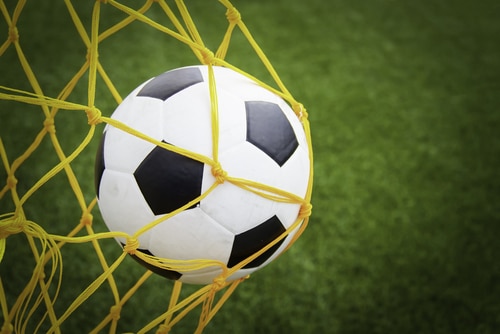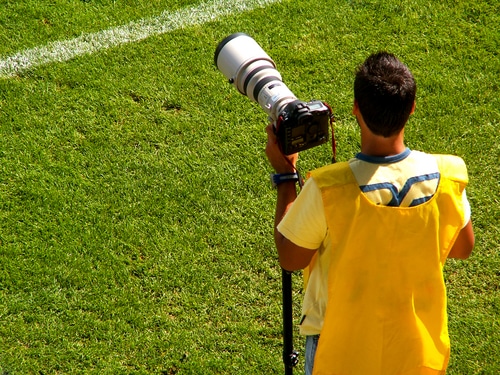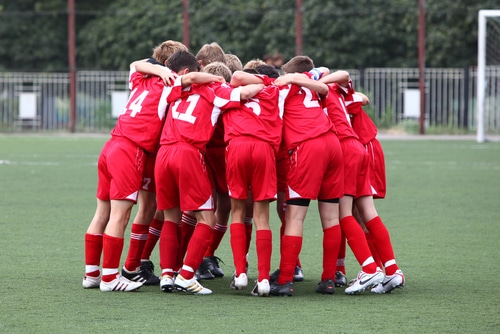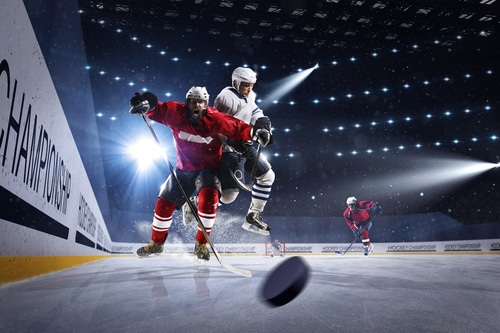Sports photography is a fun challenge for any photographer. Any competitive event is full of emotion, fast-paced action, and intensity. All of these elements can create memorable images.
However, some games are unpredictable and can be daunting. This is especially true if you are used to dealing with slow-moving subjects like landscapes and portraits.
Don’t worry! We will give you the knowledge and tools to make your next attempt at sports photography a success.
Shooting That Perfect Action Shot
Preparing Your Settings Correctly
You’re likely to have taken a lot of blurry photos in sports. This is because players and athletes move at high speeds, so your camera may not be able to compensate.
Freezing Your Object
You will need to use a fast shutter speed to freeze the action. How fast do you need it to be? It depends on what sport you are shooting. A 1/250 second should suffice to freeze children playing soccer. However, you will need to move much faster if you want a baseball captured in mid-flight. To produce sharp images, experiment and determine the shutter speed you should use.

Adding Motion
You can also slow down the shutter speed and pan your camera through the frame to create a sense of speed and movement. While it takes some practice, you can match the speed of your subject to keep them in focus, while blurring the direction emphasizes the sense that they are moving.
Wide apertures, such as f/3.5, are best. This will allow for a narrow depth of field and help the players stand out.
Consider using manual exposure mode if the sport is held outdoors in overcast conditions or indoors under consistent lighting. Although it may take some time, you will get more consistent and reliable images.
Choose Your Spots
Consider all angles and possibilities when you arrive at the track, arena, gym, or field. You will have different options depending on whether your zoom lens is short or long.
You won’t always be able to cover all angles in many sports. Wide-angle lenses can make it difficult to capture play on the other side. Likewise, a long zoom can make it difficult to capture play directly in front of your camera.
The “sweet spots” are those areas on the field that are close enough to your lens and camera combination to capture the best images. These are the areas where you will get the best shots. Do not try to capture a fantastic shot when the play is further away. Be patient and prepared so you can make the most of every moment when play is in your sweet spots.
It’s a good idea, if you can, to place yourself in a spot where players are coming towards your side. This will allow you to see faces better and better understand depth than taking shots from the sidelines.
Get In On The Action
You need to get the viewer as close as possible to capture a memorable sports photo. This usually means using a zoom lens such as 70-200mm. However, you can simply move as close to the field as you can without a long zoom lens.
Perspective changes quite a bit as you zoom in. Wide-angle shots look different from those taken with full zoom (long Telephoto). This perspective helps to create unique shots.
Many sports photographers who are first-timers are afraid to zoom in on the action. It is not without risks. There are likely to be many frames where the player is partially removed from the shot due to a random zig-zag or slant. This is part and parcel of sports photography. Even professionals can’t get the perfect picture every single time.

Sometimes Risks Pay Off
If you have trouble following the play, it definitely is an option to play it safe by taking a wider shot and then cropping in closer afterward. Again, you will get some fantastic images if you take a high-risk, high-reward approach to composition.
Another reason to use zoom: To capture expressions!
Some of the most memorable sports photos show people bursting with emotion, whether it is the excitement of winning or the pain of losing.
Timing Is Everything
Manufacturers seem to be fierce competition to make the best camera, taking the most images per second.
Although burst mode can be an extremely useful tool for sports photography, it can often prove to be a hindrance. You don’t have to take ten photos in a second just because you can.
Capabilities to capture pictures in short bursts are not as important as anticipating what will happen next. Understanding the game and anticipating what will happen next is more important than using burst mode. In addition, it will be difficult to sort through the thousands of photos you take at every event.
Burst mode is a powerful tool that can help you make the most of any opportunity and still have plenty of space on your card.
Don’t spend the entire game chiming! Chimping happens when you become so focused on all the sweet photos on your LCD screen that your eyes miss an excellent play right in front. Even if the game ends, your pictures will still be there. So concentrate on getting the shot.

Focusing On The Correct Subject
If you lose your focus, even the best compositions and timings, it won’t matter what they look like.
With the possibility of spectators, colorful advertisements, and other players in the background of your images, your camera’s focus might wander and lock onto the wrong subject.
You might consider using the back button focus for sports photography. This method allows you to control your focus by pressing a button on your back camera. It is easily reached with your thumb. The shutter button does not affect the focus.
You will have more control over the two roles by separating the focus and the taking of the picture actions. For more information about changing your camera’s focus to the back button, you may need to refer to the manual.
Various Focus Modes
You have many focus modes to help you get better results even with unpredictable and fast subjects. These modes are different for each camera, so make sure to check your manual to learn how to change them.
To begin with, your camera can use all focus points to determine which target it should lock onto. The camera might choose the wrong focus point, and you will end up with an out-of-focus image.
Zone focus allows you to be more precise. This mode allows you to choose a group of focus points that will determine your camera’s focus. While this mode allows for greater control over the focus of the camera, it still leaves room for error.
Single point focus is excellent for being very specific. You can focus on one point only if you wish. This is great for focusing on one player in a group. However, it may not be as precise, and you might need to be very steady to keep your eyes on the target.
You can also choose how the focus will track. These settings can have different names depending on the manufacturer, but they all do the same.
Continuous, AF-C (Nikon), / AI Servo (Canon): In this mode, your focus will always seek as long as your focus button is down. This mode is excellent for moving subjects and should be your first choice for sports.
Single (Nikon) or AF-S / One-shot (Canon). This mode will allow you to focus on a target and lock your camera, even while holding down the focus button. This mode is slightly faster than servo focus, but your subject might have moved out of focus before you took the shot.
AF/A (Nikon), / AI Focus (Canon) This mode is an intelligent combination of both the previous modes. It will detect if the target moves and locks or tracks.
You can capture some great sports photos by making the most of all the technology available to your camera.
Additional Tips and Tricks
It can be difficult to follow your subject when you’re photographing a race car or long jump. Many cameras can’t capture fast-moving runners or cars.
Prefocusing is a surefire way to keep your focus in these challenging conditions. Prefocus is a technique that allows you to pick a spot on the track ahead of your subject to focus. Then, once your subject is clear, snap the photo, and voila!
A lower angle is a good option if you add drama to your photos. This angle can make athletes appear heroic or larger than life. In addition, a lower angle will allow spectators to see the opponent behind the player. This gives you a better understanding of the scene and the action.
Take Many Pictures!
You’ll notice that many of the shots you took are out of focus or have players at awkward angles, or distracting from your main image. This is normal in sports photography. It’s not easy to capture sports chaos, so you will need to take a lot of shots.
As you get better at the game behind the camera and master these techniques, you’ll find more photos that are keepers.

